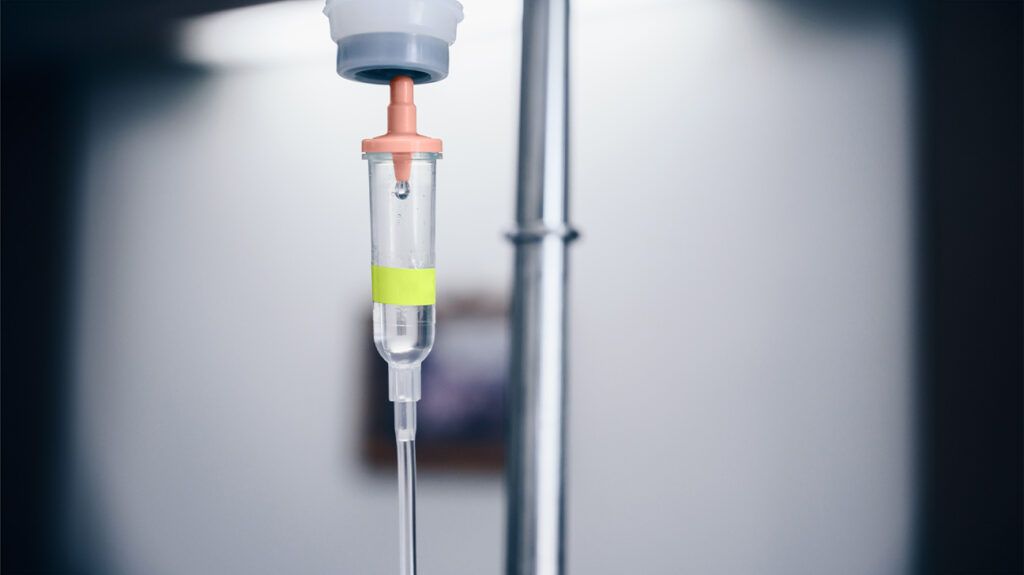
- Around 32 million people globally have Alzheimer’s disease, with the number expected to increase over the next 25 years.
- There is currently no cure for Alzheimer’s disease.
- One potential treatment area scientists have been exploring for Alzheimer’s disease is immunotherapy.
- Researchers from Washington University in St. Louis have designed a way to use antibodies to restore the nervous system’s immune cells’ ability to clear out unwanted debris that may lead to Alzheimer’s disease.
Currently, about
Right now, there is no cure for Alzheimer’s disease, and
A potential treatment area scientists have been exploring is
One of the latest studies concerning the use of immunotherapy for Alzheimer’s disease recently appeared in the journal Science Translational Medicine.
In this study, researchers from Washington University in St. Louis outline a way to use antibodies to restore the nervous system’s immune cells’ ability to clear out unwanted debris that may lead to Alzheimer’s disease.
“Currently, there is no cure for Alzheimer’s disease, and available treatments only offer partial relief from symptoms,” Marco Colonna, MD, Robert Rock Belliveau professor of pathology and immunology at Washington University in St. Louis, and corresponding author of this study explained to Medical News Today.
“Certain
“However, the effectiveness of these treatments requires further investigation,” Colonna added. “Hence, it’s crucial to explore additional strategies that could potentially be more effective or complement existing monoclonal antibody treatments to enhance overall efficacy.”
For this study, researchers used a mouse model to test their strategy, which focused on targeting proteins that regulate the activity of
“Microglia respond to signals from the tissue environment, both activating and inhibitory,” Colonna explained. “Their primary role is to clear toxic substances that build up in the brain by
“Simultaneously, microglia must safeguard the brain’s healthy components, which send signals to deter microglial activity,” he continued. “To enhance microglial phagocytic function, we can either provide activating stimuli or block inhibitory ones. Our strategy focuses on inhibiting receptors that dampen microglial phagocytosis.”
Past studies have suggested that microglia may help combat
Colonna and his team also studied the impact of the
“LILRB4 is a receptor found on brain microglia and it interacts with a fat-carrying protein called
Originally, researchers discovered high amounts of LILRB4 on microglial surfaces in brain tissue samples from people with Alzheimer’s disease.
The scientists then used a mouse model capable of expressing the human LILRB4 receptor. Their experiments showed that the LILRB4 receptor disrupted the microglia’s ability to interact with beta-amyloid plaques.
Treating the mice with antibodies against LILRB4 resulted in lower beta-amyloid amounts in the brain, increased microglia activity, and reversed some behavioral changes during maze tests that the scientists had linked to beta-amyloid accumulation.
“We discovered that when ApoE binds to LILRB4, it slows down the ability of microglia to clear amyloid plaques,” Colonna detailed.
“On the other hand, using a specific antibody to block ApoE from binding to LILRB4 actually boosts microglia’s ability to clear away these plaques. This suggests that treating Alzheimer’s patients with this antibody could potentially help in removing amyloid plaques.”
– Marco Colonna, MD
“Based on our findings, we think that treating Alzheimer’s patients with this specific monoclonal antibody could potentially help the brain to clear amyloid plaques and other harmful proteins that build up in neurodegenerative diseases,” he continued. “This treatment may also may be combined with other treatments currently tested to increase their efficacy.”
After reviewing this study, Karen D. Sullivan, PhD, a board-certified neuropsychologist, owner of I CARE FOR YOUR BRAIN, and Reid Healthcare Transformation fellow at FirstHealth of the Carolinas in Pinehurst, NC, not involved in the research, told MNT that it provides additional evidence of the power of
“These research insights provide further support that monoclonal antibodies can interfere with the build-up of beta-amyloid, which is considered to be one of the primary biomarkers of the disease,” Sullivan said.
“What we still don’t know is how a reduction of amyloid from this new mechanism, anti-LILRB4 microglia signaling, benefits cognition and the course of the disease process,” she noted.
“With the so-called ‘graying of the world,’ we are about to hit a population explosion of people living with dementia,” Sullivan added. “The financial and psychological toll of this significant increase in people diagnosed with the neurodegenerative disorder is massive and we need all resources pointed towards care and medical management of these diseases.”
MNT also spoke with Manisha Parulekar, MD, director of the Division of Geriatrics at HackensackUMC, co-director of the Center for Memory Loss and Brain Health, and associate professor at the Hackensack Meridian School of Medicine in New Jersey, about this study.
Like Sullivan, Parulekar was not involved in this research.
“Microglia are essential for various brain protective functions like maintaining [the]
“This study is outlining [the] possible impact of disruption of these protective functions in the etiology [causal mechanisms] of Alzheimer’s disease, and possible interventions. We are still working towards effective treatment for Alzheimer’s. Microglia function restoration could be a possible treatment option,” she told us.
“Alzheimer’s disease is the most common form of dementia, affecting millions of people worldwide,” Parulekar continued. “The number of cases is projected to increase significantly in the coming decades due to aging populations. It is a public health crisis worldwide, as it does put a significant financial and caregiver burden on the family, community and society.”
The expert said we still lack an effective treatment that can stop or reverse the disease progression.
“Our ongoing research is suggesting that Alzheimer’s disease is possibly caused by multiple processes/risk factors,” she added. “Hence, it is essential to explore various treatments that can stop or slow down the neurodegenerative process.”